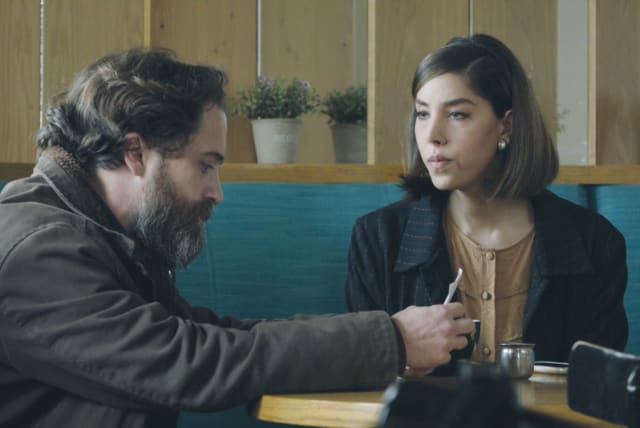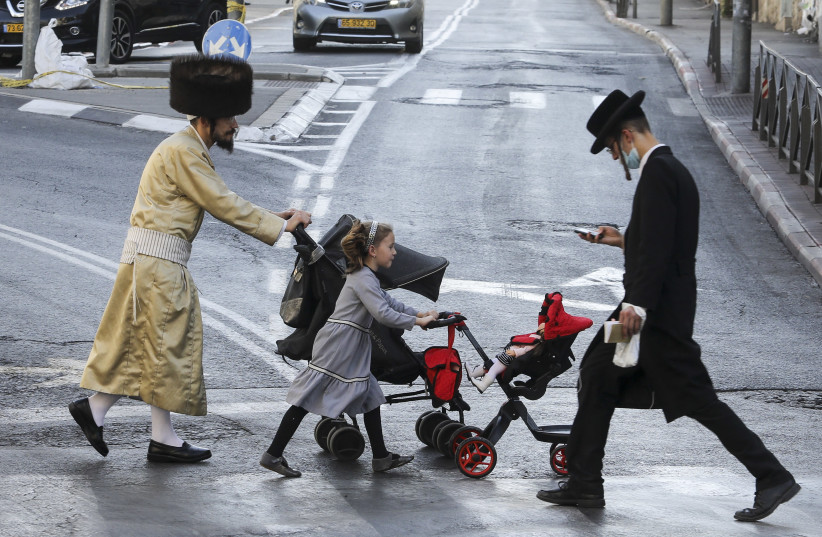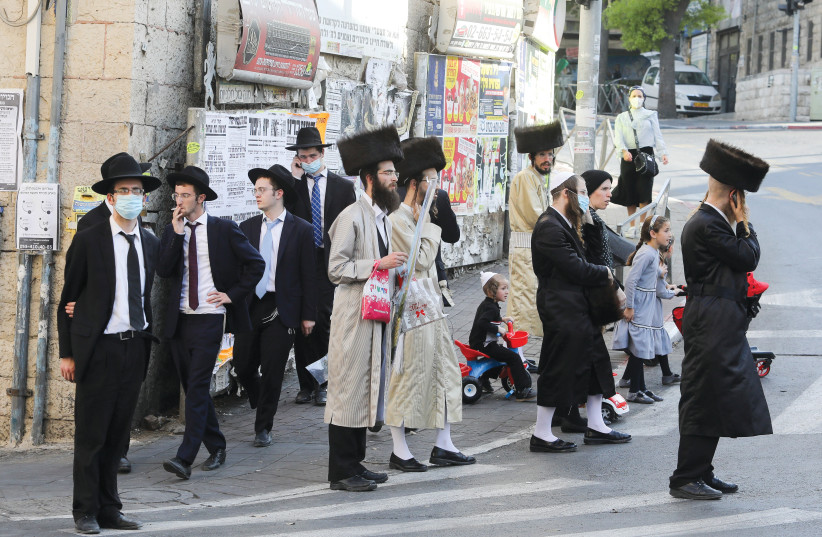The Malevolent Bride: Ultra-Orthodox women, girls possessed by demonic spirit

The Malevolent Bride is a thriller that tells the story of women and girls in the ultra-Orthodox community who seem to be possessed by a demonic spirit.
Noah Stollman, one of the writers of Fauda, has swapped the narrow alleys of the West Bank for the crowded streets of an ultra-Orthodox neighborhood in Jerusalem in the new series, The Malevolent Bride, which will begin running on Sunday nights on Kan 11 on April 2.
The Malevolent Bride is a thriller that tells the story of women and girls in the ultra-Orthodox community who seem to be possessed by a demonic spirit – a story that is reminiscent in some ways of The Exorcist.
“It’s the first time that we’re doing something that we’re calling a horror series,” said Stollman, who created the show with Avigail Ben-Dor Niv and Oded Davidoff, who also served as director. But he stressed that The Malevolent Bride isn’t just one genre: “It’s not strictly horror, per se, because it’s a psychological drama and it has dark humor in it.”
The series was executive produced by Orly-Atlas Katz and Osnat Saraga for Ananey Studios (which is a Paramount Company) and Barry Jossen and Tana Jamieson for A+E Studios. It focuses on a Jerusalem scientist, Dov Be’er (Tom Avni, of Valley of Tears and Image of Victory) researching the concept of a vacuum in physics.
He grew up in and left the ultra-Orthodox community but is drawn into an investigation of violent crimes committed by haredi women when a police investigator (Hisham Suliman of Fauda) finds evidence that links him to these women. Be’er insists he hasn’t kept in touch with anyone from his old neighborhood. But, when the investigator’s suspicions threaten to derail his scientific career, he joins forces with an Orthodox doctor (Lioz Levi) – who has treated some of the women and who has secrets of her own – to try to unravel the mystery.
Stollman's inspiration for The Malevolent Bride
Stollman, who was also one of the creators of Our Boys and who won an Ophir Award for his screenplay for The Human Resources Manager, said that while there are jump scares and gory moments in The Malevolent Bride, he and Ben-Dor Niv were trying to tell a story that looks deeply into the conflict between faith and secularism. He pointed out that while The Exorcist is remembered for its most shocking moments, it is a multilayered story:
“The Exorcist was part of the heyday of American filmmaking, back when films were for adults and where you could do fantasy and supernatural but it wanted to make you think... The Exorcist talks about so many things, about religion and about mother-daughter relationships and sexuality and the place of religion in modern society and the power of faith and belief and all of those things were very interesting to us.”
These are questions he grew up wrestling with, as the son of Americans in Jerusalem who identified with American Conservative Judaism. His parents were among the founders of a conservative congregation, but Stollman didn’t find his place there:
“I always wanted to be an artist, so I was very antagonistic toward anything that I felt was oppressive or that I thought wanted to limit your imagination, and only later in life did I realize how meaningful [that congregation] was for my father, how significant the traditions were.
“But I was always fascinated with the idea of religious belief and how you could still be intellectually curious and believe in a higher power. I was always interested in mystery, I think the sense of mystery and awe is one of the most interesting aspects of art in general and it’s what I strive to touch on in my work.”
SOME OF his struggles with religious belief versus art and science find expression in the dilemma that confronts Be’er. “It was interesting for us to try to look at the clash between someone who has faith in science and someone who has faith in religion or traditions. For Tom [Avni]’s character, the scientist, his research is like a metaphor,” for exploring the powers at work in the universe, but from the opposite perspective from his ultra-Orthodox background.
Researching for the series
To write the series, Stollman read as much as he could about physics. “I really tried to get my head around the fact that, as it’s mentioned in the series, first there was nothing and then it exploded... that’s right before the Big Bang... so how can nothing explode?”
Stollman and Ben-Dor Niv also explored the concept of demonic possession and researched the topic extensively, including with Rachel Elior, a professor of Jewish philosophy at the Hebrew University of Jerusalem, who is an authority on the subject:
“These stories in all cultures are usually cautionary tales of sinners who died and they could not go into the next life and so they enter the body, usually of a woman. And in the narratives, it’s usually a male demon who enters a female body and the female is just the vessel and she’s just lying there dormant while the priest or the shaman or whoever it is who’s performing the ritual talks to the man through the woman.
“There are a lot of hidden and symbolic sexual motifs in narratives of demonic possession, and so it struck us that what better environment can there be to tell stories about taboos and repressed sexuality, [than the contemporary ultra-Orthodox community]?”
Ben-Dor Niv had been studying Talmud and they were both interested in how “women traditionally have been silenced in Talmudic literature, but as possessed women, they have a voice.”
They also met with a researcher in demonology who gave them protocols from medieval Jewish exorcisms. “They were beautiful texts that we used almost verbatim.”
Stollman had once considered adapting a story by Isaac Bashevis Singer and was influenced by “how he incorporates and mixes the supernatural, the idea of ghosts and demons and spirits into a bigger mystery,” as well as how he was, “subversive in his own way about sexuality.” He said he hoped something of Singer’s outlook found its way into The Malevolent Bride.
While there is a darkness in the story, it is balanced by lighter moments, even humor, some of which is supplied by Yishai, Be’er’s childhood friend, now a married father who runs a print shop with his brainy daughter.
In order to portray the characters in Mea Shearim, Stollman spent time with an ultra-Orthodox family, who answered his questions, but had many for him as well. “They were the most genuine, welcoming, generous people and they were super curious about what we were doing. It was fascinating, they were very different from the stereotypes.”
Stollman hopes that the mix of deeper themes and scary fun will appeal to audiences, both in Israel now and eventually around the world. “We want people to be engaged and to be challenged and to scare people and we want people to have fun while they’re watching it, but we also want to provoke a discourse about all the different themes in the show, and what it means to live in a city where all of these themes collide, and how faith can be dangerous and violent but also beautiful and meaningful.”
Jerusalem Post Store
`; document.getElementById("linkPremium").innerHTML = cont; var divWithLink = document.getElementById("premium-link"); if (divWithLink !== null && divWithLink !== 'undefined') { divWithLink.style.border = "solid 1px #cb0f3e"; divWithLink.style.textAlign = "center"; divWithLink.style.marginBottom = "15px"; divWithLink.style.marginTop = "15px"; divWithLink.style.width = "100%"; divWithLink.style.backgroundColor = "#122952"; divWithLink.style.color = "#ffffff"; divWithLink.style.lineHeight = "1.5"; } } (function (v, i) { });


